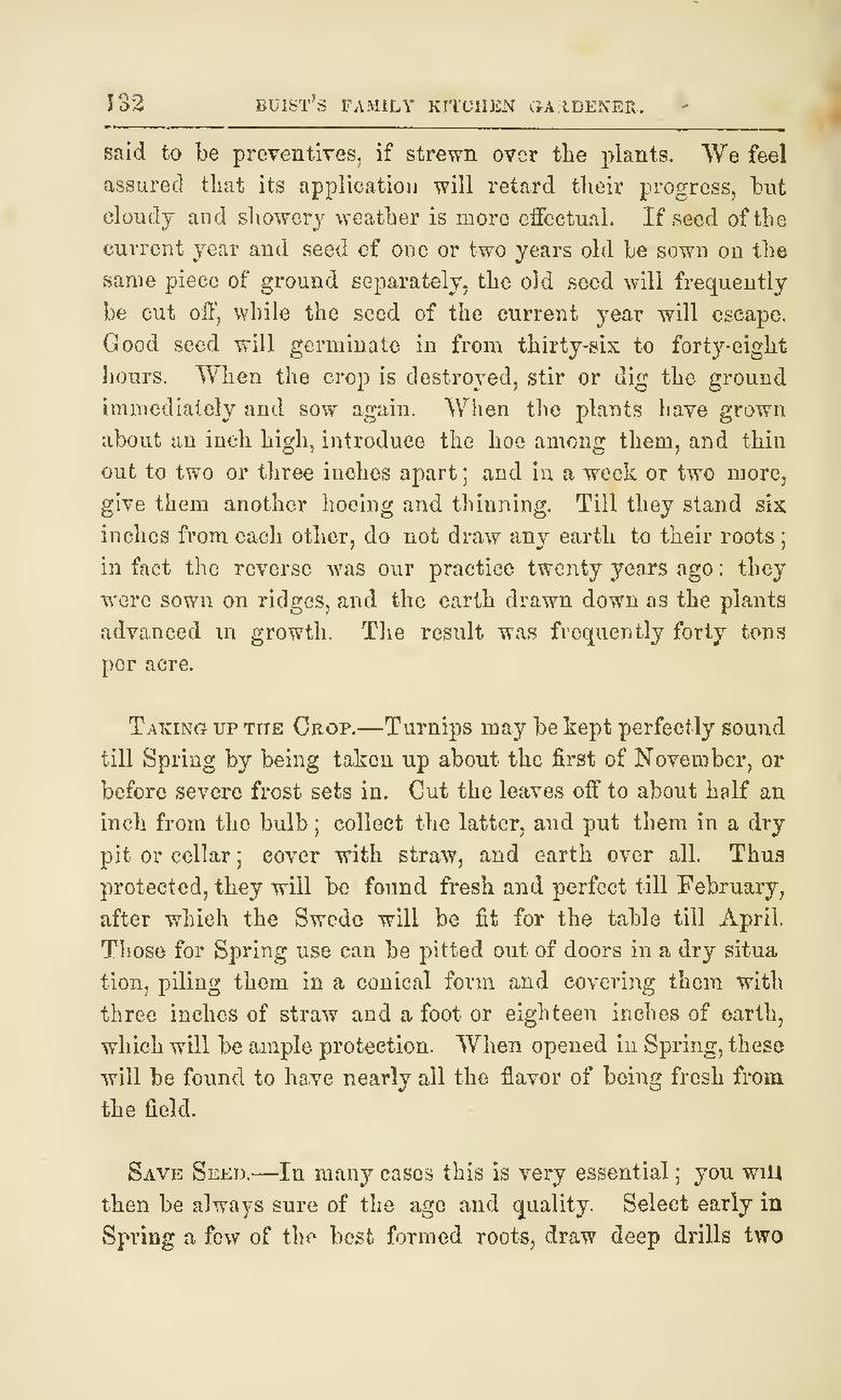said to be preventives, if strewn over the plants. We feel assured that its application will retard their progress, but cloudy and showery weather is more effectual. If seed of the current year and seed of one or two years old be sown on the same piece of ground separately, the old seed will frequently be cut off, while the seed of the current year will escape. Good seed will germinate in from thirty-six to forty-eight hours. When the crop is destroyed, stir or dig the ground immediately and sow again. When the plants have grown about an inch high, introduce the hoe among them, and thin out to two or three inches apart; and in a week or two more, give them another hoeing and thinning. Till they stand six inches from each other, do not draw any earth to their roots; in fact the reverse was our practice twenty years ago: they were sown on ridges, and the earth drawn down as the plants advanced in growth. The result was frequently forty tons per acre.
Taking up the Crop.—Turnips may be kept perfectly sound till Spring by being taken up about the first of November, or before severe frost sets in. Cut the leaves off to about half an inch from the bulb; collect the latter, and put them in a dry pit or cellar; cover with straw, and earth over all. Thus protected, they will be found fresh and perfect till February, after which the Swede will be fit for the table till April. Those for Spring use can be pitted out of doors in a dry situation, piling them in a conical form and covering them with three inches of straw and a foot or eighteen inches of earth, which will be ample protection. When opened in Spring, these will be found to have nearly all the flavor of being fresh from the field.
Save Seed.—In many cases this is very essential; you will then be always sure of the age and quality. Select early in Spring a few of the best formed roots, draw deep drills two
